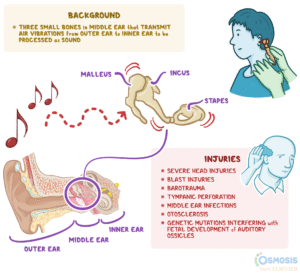Pictures of Different Types of Fractures
Understanding Bone Fractures: A Comprehensive Guide
Bone fractures, or broken bones, vary widely in appearance and severity. While some fractures are immediately obvious, others may present subtle symptoms, making diagnosis challenging. This guide explores different types of fractures, their symptoms, and treatment options, offering insights into their complexity and management.
Types of Bone Fractures
Fractures are classified based on their characteristics, such as the bone’s alignment or the nature of the break. Understanding these distinctions is key to effective treatment.
Displaced vs. Non-Displaced Fractures
Displaced fractures occur when the broken bone segments shift out of alignment, often requiring medical intervention to reposition them. Non-displaced fractures, also called simple fractures, involve a break where the bone remains in its proper position, typically needing less invasive treatment.
Open and Closed Fractures
An open fracture, or compound fracture, involves a break where the bone pierces the skin or is associated with an open wound, increasing infection risk. Closed fractures, on the other hand, do not break the skin, reducing the likelihood of complications but still requiring careful management.
Stress Fractures
Stress fractures, sometimes referred to as hairline fractures, develop from repetitive stress or overuse, common in athletes or individuals engaging in high-impact activities. These fractures often occur in weight-bearing bones, like those in the feet, due to prolonged running or jumping on hard surfaces.
Common Fracture Symptoms
Fracture symptoms vary depending on the injury’s severity and location. Common signs include:
-
Pain: Often intense, especially with movement or pressure.
-
Swelling or Bruising: Mild to significant inflammation around the injury site.
-
Impaired Mobility: Difficulty moving the affected area, sometimes due to pain or nerve damage.
-
Deformity: Visible misalignment or unnatural bending of the affected body part.
-
Audible Snap: A cracking sound at the time of injury may indicate a fracture.
Diagnosing Fractures
Accurate diagnosis is critical for effective treatment. Healthcare providers often use:
-
X-Rays: The primary tool for identifying bone breaks and assessing their severity.
-
Physical Examination: To evaluate swelling, deformity, or impaired movement.
-
Patient History: Understanding the injury’s cause, such as trauma or repetitive stress, aids diagnosis.
Treatment Options for Fractures
Treatment depends on the fracture type, location, and severity. Common approaches include:
Immobilization
Splints or casts are used to keep the bone stable during healing. For example, a pillow splint can immobilize an ankle fracture while minimizing discomfort.
Surgical Intervention
Displaced or open fractures may require surgery to realign bones or address complications like infections. Surgical hardware, such as pins or plates, may be used to stabilize the bone.
Physical Therapy
Post-healing, physical therapy is essential to restore strength, mobility, and function. For instance, targeted exercises help recover hand mobility after a metacarpal fracture.
RICE Method
The RICE protocol—Rest, Ice, Compression, and Elevation—is effective for managing pain and swelling in the early stages. Ice should be applied for no more than 15-20 minutes at a time, with a cloth barrier to prevent frostbite.
Specific Fracture Examples
Ankle Fractures
Ankle fractures, often mistaken for sprains, cause significant pain and swelling. Treatment may involve immobilization or surgery, followed by physical therapy to regain mobility.
Thumb and Finger Fractures
The hand’s 14 phalanges are prone to fractures, causing severe pain and limiting function. Prompt treatment, including splinting or surgery, is crucial to prevent long-term issues.
Hand and Wrist Fractures
The wrist’s eight carpals and hand’s five metacarpals enable complex movements. Fractures here can impair dexterity if untreated, necessitating immediate medical attention.
Sesamoid Fractures
Located at the base of the big toe, sesamoid bones can fracture due to trauma or repetitive stress. Treatment ranges from rest to surgical intervention, depending on severity.
Mallet Finger
A mallet finger results from a stretched or torn tendon, sometimes accompanied by a fracture. Common in sports, it may require splinting or surgery to restore finger function.
Colles Fracture
A Colles fracture, typically caused by falling on an outstretched hand, involves the radius bone and often results in a distinctive wrist deformity. Splinting or surgery, followed by physical therapy, aids recovery.
Preventing Complications
Fractures, especially open ones, carry risks like infection or nerve damage. Key preventive measures include:
-
Wound Care: Thorough cleaning and antibiotics for open fractures.
-
Proper Immobilization: Ensuring the injured area remains still to promote healing.
-
Footwear Choices: Cushioned, well-fitted shoes can reduce stress fractures in the feet.
Healing Timeline
Fracture healing typically takes 6-12 weeks, with children often recovering faster than adults. Keeping the affected area immobilized is critical, as movement can delay or disrupt healing.
Frequently Asked Questions
How Long Does a Fracture Take to Heal?
Most fractures heal within 6-12 weeks, though this varies by age, fracture type, and treatment adherence. Immobilization is vital to support the healing process.
What’s the Difference Between Open and Closed Fractures?
Open fractures involve a skin wound, increasing infection risk, while closed fractures do not. Open fractures require wound management alongside bone treatment.
How Can Stress Fractures Be Prevented?
Wearing supportive footwear and avoiding repetitive high-impact activities on hard surfaces can reduce the risk of stress fractures.
💡 Frequently Asked Questions
Spiral Fracture Damage: What’s Major?
Answer coming soon. We are working on detailed responses to this common question.
Consistently Questioned QuestionsWhat are displaced and nondisplaced bone fractures?
Answer coming soon. We are working on detailed responses to this common question.
What is a substance fracture?
Answer coming soon. We are working on detailed responses to this common question.
What is a frustration fracture?
Answer coming soon. We are working on detailed responses to this common question.
Study A lot more:Irritation Fracture Evaluate How extended does a fracture get in direction of cure?
Answer coming soon. We are working on detailed responses to this common question.
⭐ Expert Tips
- Include seasonal or trendy variations to keep your meals exciting.
- Highlight prep shortcuts or time-saving techniques for busy cooks.
- Consider dietary restrictions and include substitution suggestions.
✅ Key Takeaways
- These dinner ideas are perfect for impressing guests or enjoying special occasions.
- Choose recipes that match your skill level and available kitchen tools.
- Presentation and taste both contribute to a memorable dining experience.
📣 Join Our Community
Want more inspiration like this? Subscribe to our newsletter for weekly dinner ideas and cooking tips!







